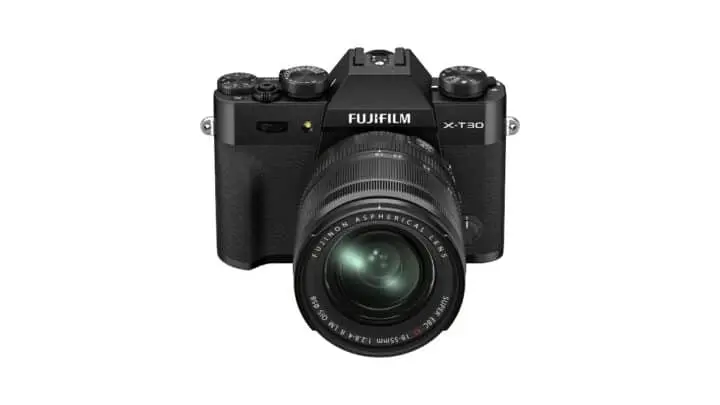The Fujifilm X-T30 II is a high-performance mirrorless camera with advanced features and high-quality image capture in a small, light body. This mid-range camera Fujifilm is an updated version of the well-known Fujifilm X-T30. It is intended for photographers who want effective results without carrying a bulky camera. You’ll receive amazing good photographs, a body with a stylish design, access to a wide selection of lenses, and a tonne of helpful accessories. The Fujifilm X-T30 II is an excellent choice for amateur and professional photographers looking for a dependable, high-quality camera. Let’s dive into its information without wasting any time! Let’s get clicked!
What will you see here?
Quick Summary
The Fujifilm X-T30 II is a mirrorless camera with various features and capabilities that will appeal to both professional and amateur photographers. The X-T30 II easily produces high image quality thanks to its compact design, quick autofocus system, and advanced image processing technology in low light. The camera also has a variety of customizable controls and shooting modes, including autofocus, that allow you to create unique and professional-level images with an amazing battery. The Fujifilm X-T30 II is a great choice for photographers looking for a high-performance camera in a compact and lightweight package if you’re searching to encapsulate everyday moments, travel photography, or professional shoots.
- Its lightweight and compact design makes it easy to transport.
- For high-quality results, use advanced image processing technology.
- Autofocus system that works quickly to capture sharp images.
- Flexible shooting modes for capturing a variety of images.
- Controls that can be customized for a more personalized shooting experience.
- In-body image stabilisation is limited.
- Video capabilities are limited when compared to other cameras in its class.
- Some users, particularly those with larger hands, may find the camera’s small size and buttons difficult to operate.
- Priced higher than entry-level mirrorless cameras.
- Battery life is limited in comparison to other cameras in its class.
Design and Structure
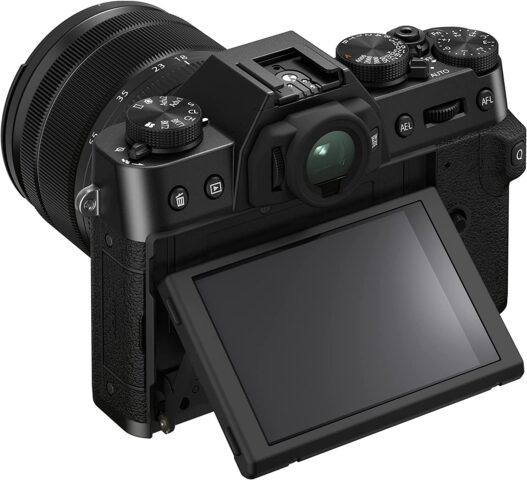
The Fujifilm X-T30 II has a stylish and functional compact retro-inspired design. Its small size makes it convenient to transport, and its lightweight construction makes it comfy to hold and use for long periods. It has a simple design with conventional dials and buttons for quick and easy access to important settings and functions. The camera body is constructed of a high-quality mg alloy that is both strong and light.
The camera also has a sleek and stylish design that is eye-catching and professional. The Fujifilm X-T30 II has various features that make it a flexible and high-performance camera, in addition to its compact size and stylish design. There’s an electronic shutter speed dial, an exposure compensation dial, and a drive mode dial on the camera’s top shutter plate. It has a large, high electrical viewfinder that gives you a clear, detailed view of your subjects. The camera also has a 3-inch touch-sensitive LCD screen that tilts up to 180 degrees, allowing you to shoot from high or low light shooting angles easily and enabling you to focus in the day as well at night too. This touch screen allows you to access the phone’s various shooting modes and controls and see a live view of your subject while shooting.
Image and Video Quality
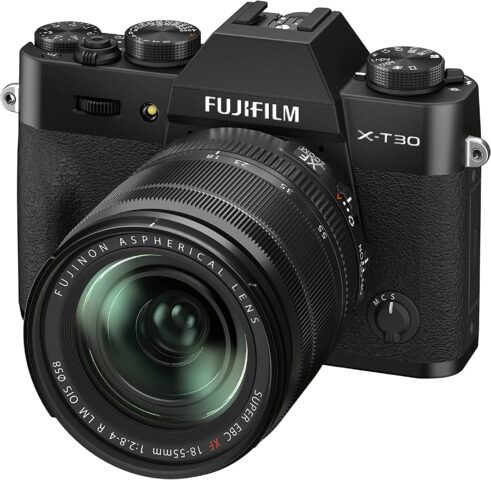
The Fujifilm X-T30 II produces high-quality good images thanks to its advanced image processing technology and adaptable lens system. The camera has a 26.1-megapixel APS-C sensor, which captures a lot of detail and produces images with accurate colors. The image processing engine in the camera, the X-Processor 4, is fast and efficient, enabling you to take images quickly and with minimal delay. The camera has a 26.1-megapixel APS-C sensor, which captures great detail and generates crisp, sharp pictures with true colors. The X-T30 II can shoot continuously at 8 frames per second using the mechanical shutter. The X-Processor 4 image processing engine in the camera offers speedy and effective image processing, enabling you to take pictures quickly and with no delay.
Lens Compatibility
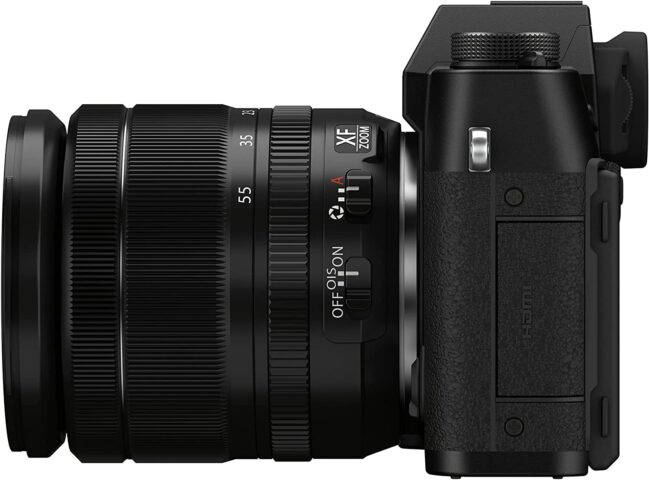
The Fujifilm X-T30 II’s lens compatibility allows you to record a variety of topics because it is compatible with a large selection of Fujifilm X-mount lenses. Although an expanded iso range is available, the camera only allows you to use the mechanical shutter at low (iso 80) and high (iso 51200) levels. A Fujifilm lens can help you get the photos you want, whether they are of landscapes, people, animals, or action. The Fujifilm X-T30 II produces high-quality good images thanks to its advanced image processing technology and adaptable lens system.
The camera has a 26.1-megapixel APS-C sensor, which captures a lot of detail and produces images with accurate colors. The image processing engine in the camera. The X-Processor 4, is fast and efficient, enabling you to take images quickly and with minimal delay. The camera has a 26.1-megapixel APS-C sensor, which captures great detail and generates crisp, sharp pictures with true colors. The X-T30 II can shoot continuously at 8 frames per second using the mechanical shutter. The camera’s X-Processor 4 image processing engine offers speedy and effective image processing. Enabling you to take pictures quickly and with no delay.
Battery Level
The battery level of the Fujifilm X-T30 II can be viewed on the camera’s LCD screen or through the electronic viewfinder. The camera has a built-in battery indicator that displays the remaining battery life as a percentage. The camera uses a rechargeable Li-ion battery, which typically lasts for approximately 390 shots per charge.
Fantastic Features
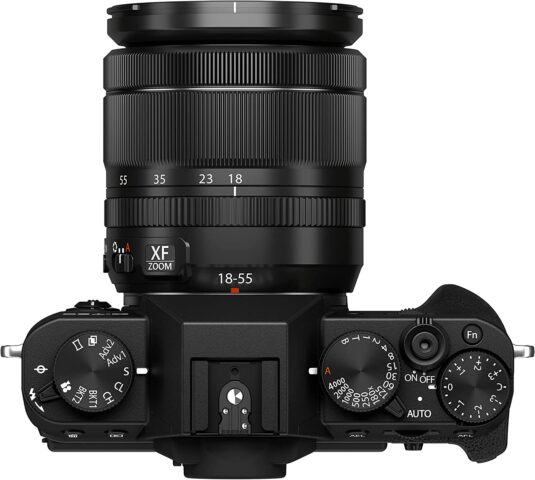
The Fujifilm X-T30 II is a range of the company’s X-series of mirrorless cameras. And offers a variety of features and functionalities to suit the requirements of different photographers. The camera’s small size makes it the perfect option for travel, street photography, and other situations requiring a portable camera. Several cutting-edge capabilities are available on the Fujifilm X-T30 II. Including 4K video capture, integrated Wi-Fi and Bluetooth connectivity, and several programmable settings. The camera also includes Fujifilm’s Film Simulation modes, which enable you to take pictures with various film-like effects, such as Provia, Velvia, and Astia. Let’s talk about some of them in detail:
Fujifilm Film Simulation mode
The Fujifilm X-T30 II has a special feature called Fujifilm Film Simulation mode, which enables you to take pictures with various film-inspired effects. The Film Simulation mode enables you to take pictures that resemble various Fujifilm film stocks, which have a long history of creating high-quality film stock.
However, using the Film Simulation mode, you can select from various film stocks, including Provia, Velvia, and Astia. Every film stock selection has a distinctive look and feels that can be used to improve the tone and fashion of your pictures.
Customizable controls
It is possible to customize the Fujifilm X-T30 II’s controls to suit your unique requirements and preferences. Among the controls that can be modified are:
- Quick menu (Q): The quick menu, accessed by pressing the Q button, shows some frequently used settings. You can alter the items in the fast menu to suit your needs.
- Shutter speed dial: This can be altered to simplify choosing a certain shutter speed.
- Function (Fn) buttons: Four functions buttons of the X-T30 II can be assigned to various operations, including ISO, white balance, focus mode, and more.
- Focus lever: The focus mode, including single point, zone, and tracking, can be adjusted with the focus lever.
- Exposure compensation dial: You can adjust the dial to control it in 1/3 stop steps.
What is the distinction between the X-T30 and X-T30 II?
The touch LCD screen is the only tangible difference between the X-T30 II and the X-T30. The new screen resolution is 1.62 million, compared to the X-1.04 T30’s million dots. The difference is only noticeable when comparing the two computer monitors. Dimensions and weight are identical.
Is Fujifilm appropriate for street photography?
The Fujifilm X100V isn’t the most compact option, but Fuji has managed to fit just about everything you’d want in a handheld carry-around camera.
Canon or Fuji cameras are better?
Canon’s optics are inferior to those of Fujifilm. They produce expensive lenses. Fuji makes you happy if you want a fantastic camera on a tight budget; the x-a series camera is excellent. Nevertheless, consider your needs and budget while selecting a camera.
Conclusion
Thus, the Fujifilm X-T30 II is a terrific option for generating high-quality results, whether trying to capture high-quality photographs for personal or professional purposes. The Fujifilm X-T30 II, in sum, offers a high level of control customization, enabling photographers and videographers to tailor their shooting experience.
Users may quickly access the camera settings they require while shooting by customizing the different dials, buttons, and touch controls. Although, this cuts down on time spent making adjustments and frees users to concentrate on capturing their vision. The X-T30 II is a desirable alternative for photographers who appreciate a customized shooting experience because of its programmable features.
Read More
- Best Travel camera to capture the happy moments in the best resolution!
- Best camera for beginners in 2024 to kickstart your photography skills!
- Best iPhone photo printer, you can make a picture in an instant!
- Best Instant Cameras of 2022: Check the top ones!
- How to control the soundbar with a TV Remote?
Fujifilm X-T30 II review: Excellent mirrorless camera!
-
Design
-
Features
-
Image Quality
-
price
Summary
Thus, the Fujifilm X-T30 II is a terrific option for generating high-quality results, whether trying to capture high-quality photographs for personal or professional purposes. The Fujifilm X-T30 II, in sum, offers a high level of control customization, enabling photographers and videographers to tailor their shooting experience.


